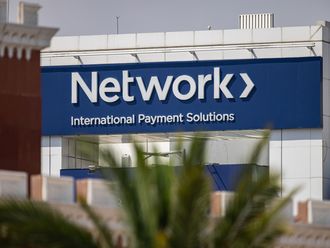
Dubai: Qatar have recently been successful in raising funds from abroad. The sharp increase in their external debt raises their vulnerability to the risk of a shift in investor sentiment or change in global liquidity conditions, according to Standard & Poor’s
Analysts say the surge in external funding in Qatar is expected to lead to two main risks namely, an outflow of liquidity and a large open position.
“Because external funding is now dominated by short-dated corporate and bank deposits, we see a risk of a decrease in liquidity in case of a sudden shift in investor sentiment or a drying up of global liquidity. However, we see this risk as limited in the next 12-24 months because of our view that global liquidity will remain relatively abundant,” S&P Global Ratings credit analyst Muhammad Damak.
Some of the leading Qatari banks sought external liquidity when deposits of government and government-related entities (GREs) decreased when oil prices started to decline in the second half of 2014.
Resident deposits at Qatari banks shrank by 3.5 per cent in 2016 following a significant slowdown in growth in 2015 and 2014. The drop came primarily from government and GRE deposits, which represented around 70 per cent of public-sector deposits in Qatar and contributed to about 40 per cent of resident deposits over the past four years.
/polopoly_fs/1.2027154.1494771861!/image/964808425.jpg
Liquidity dynamics
As a result of the drop in local deposits, Qatari banks went aggressively after global liquidity, primarily in Europe and Asia. The banks saw a doubling in overall gross external funding--that we approximated by totalling nonresident deposits, interbank deposits, and market instruments--which doubled to 441 billion Qatari riyals (Dh444.8 billion) at year-end 2016 from 219 billion riyals at year-end 2014. The composition of external funding has also shifted toward nonresident deposits, which accounted for 42 per cent of the total at year-end 2016 compared with 22 per cent at year-end 2014.
“The rise in external funding in our view was aided by the global abundance of liquidity, thanks to the ECB’s QE programme and still good liquidity in some Asian countries. Qatar’s credit story also explains this interest from investors. The country has displayed a fair level of resilience to the shift in oil prices and its economic growth has remained relatively resilient,” said Damak.
The trend of falling resident deposits partly reversed in the first two months of 2017 thanks to a stabilisation in oil prices, which S&P expect will remain at $50 per barrel in 2017 and 2018, and the government’s issuance of large international bonds.
US dollars
Government deposits increased 5 per cent at the end of February 2017, from year-end 2016 levels. On the asset side, growth in Qatari banks’ domestic loans nevertheless remained buoyant at 12.6 per cent in 2016, but is expected to slow in 2017 and 2018 as the government reduces spending. However, the reliance of Qatari banks on external funding is expected to remain high.
“The banks have managed to attract a significant amount of external funding, mostly denominated in US dollars and mostly short-term debt of about six months, according to our understanding. On the other hand, Qatari banks have used a large portion of this funding to finance typically long-term local projects denominated in Qatari riyal, resulting in a significant open position in US dollars,” said Damak.
Surge in external funding is a factor to watch for Qatari banks, however, it is not an imminent threat to the health of the system. Indeed, several factors are protecting banks from the risks of significant external funding. Firstly the expected stability of the peg of Qatari riyal to the dollar prevents potential inflation in external debt value. While Qatari government as highly supportive toward its banking system, there is a regulation in place that caps, a bank’s foreign currency open position in US dollars at 5 per cent of capital and reserves.










